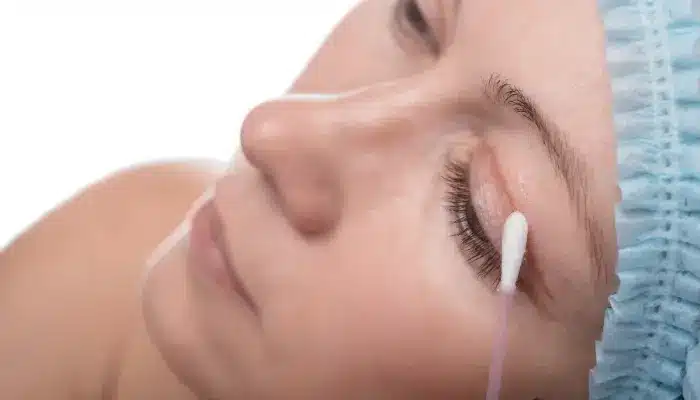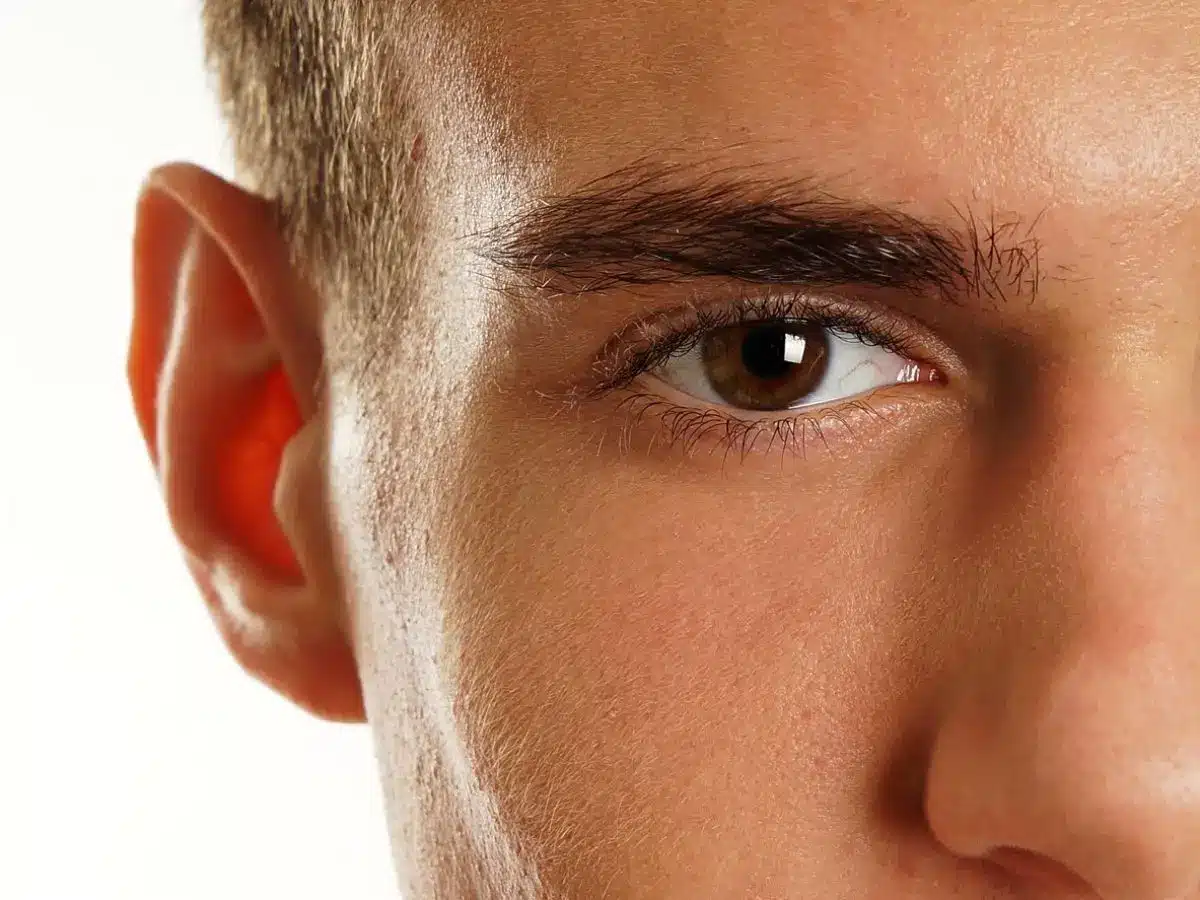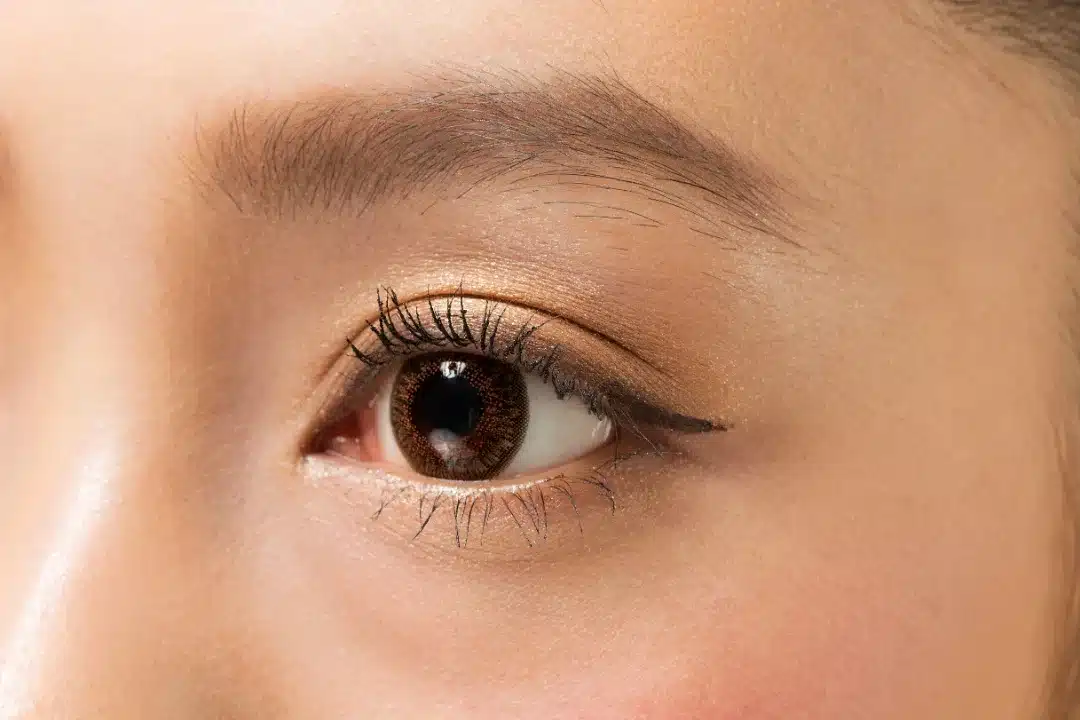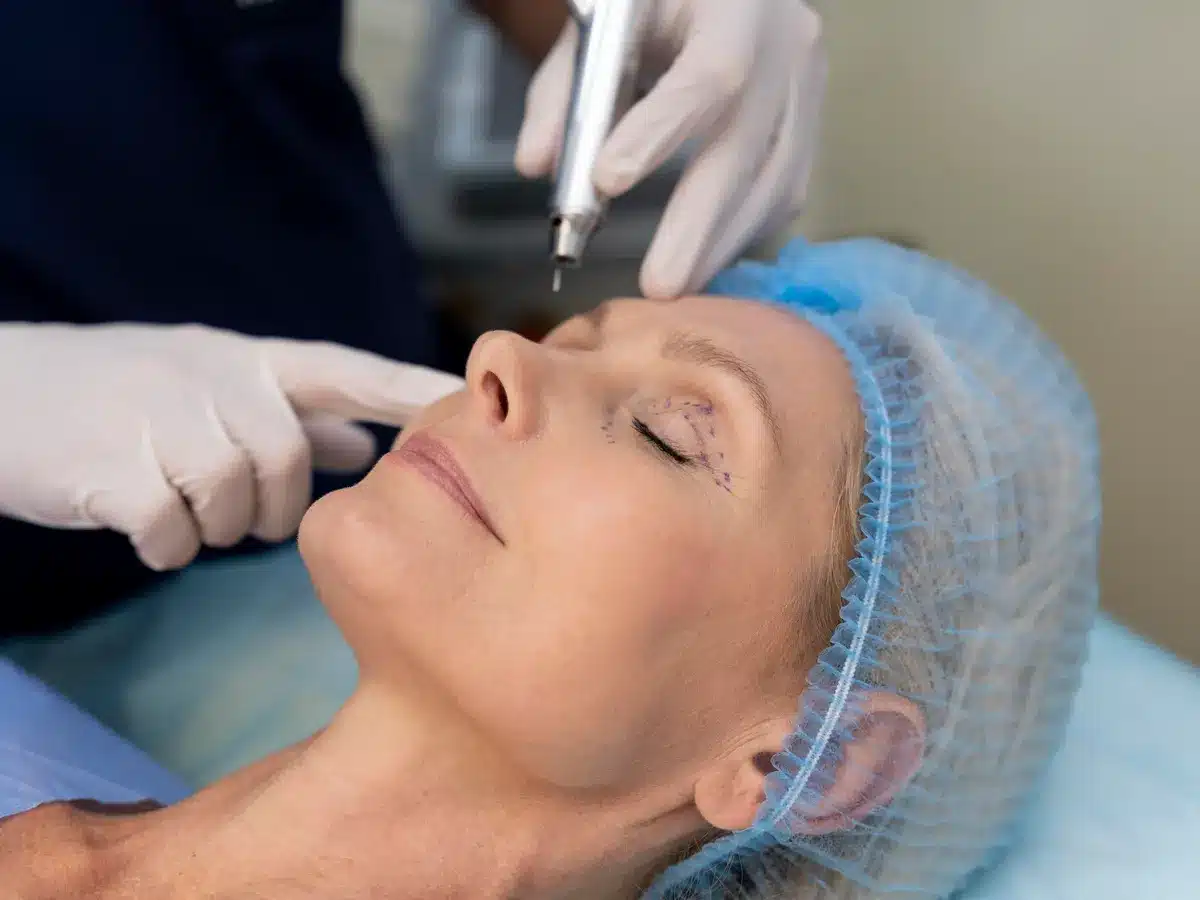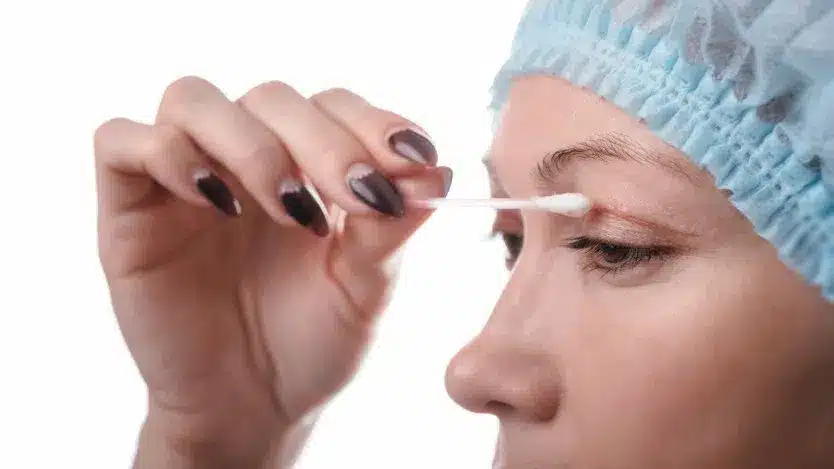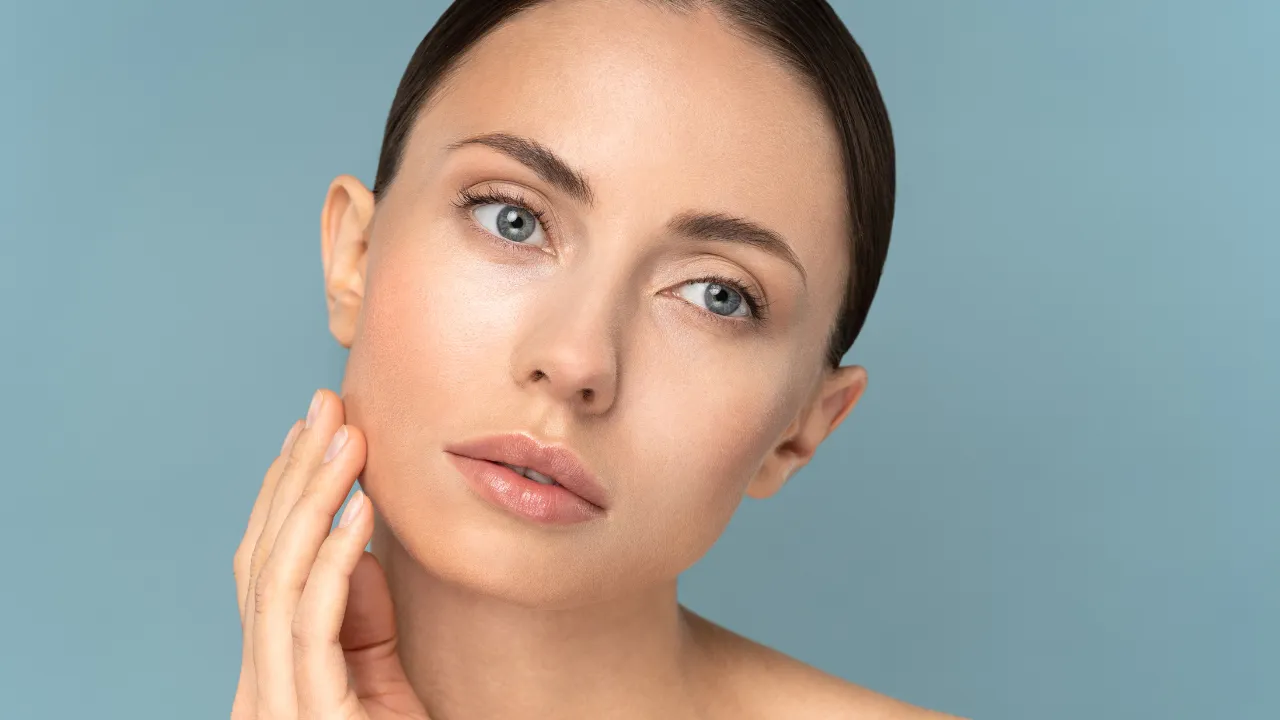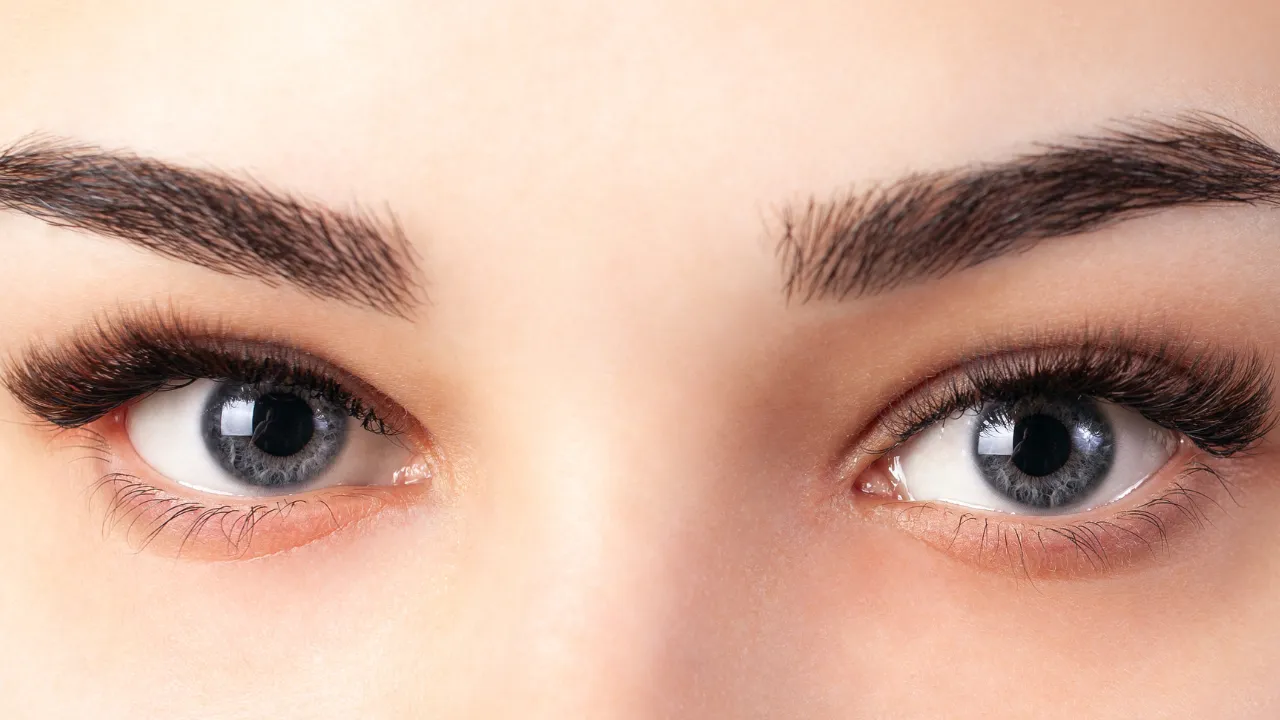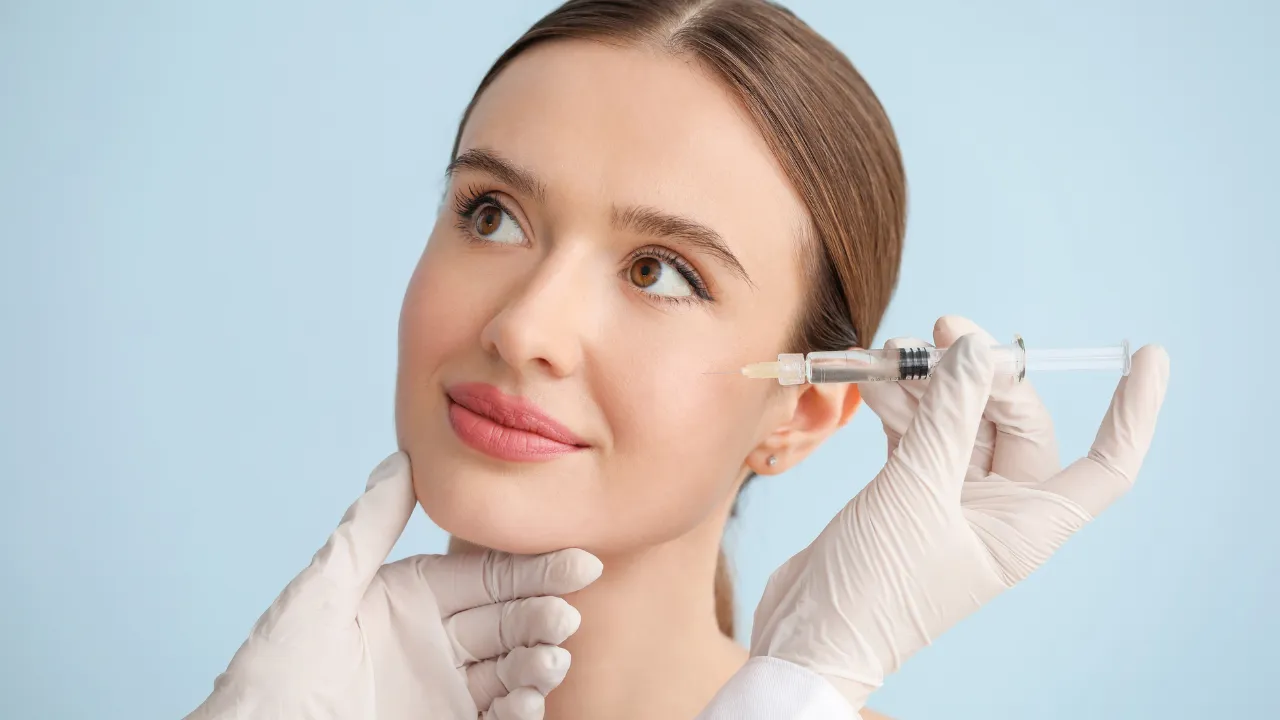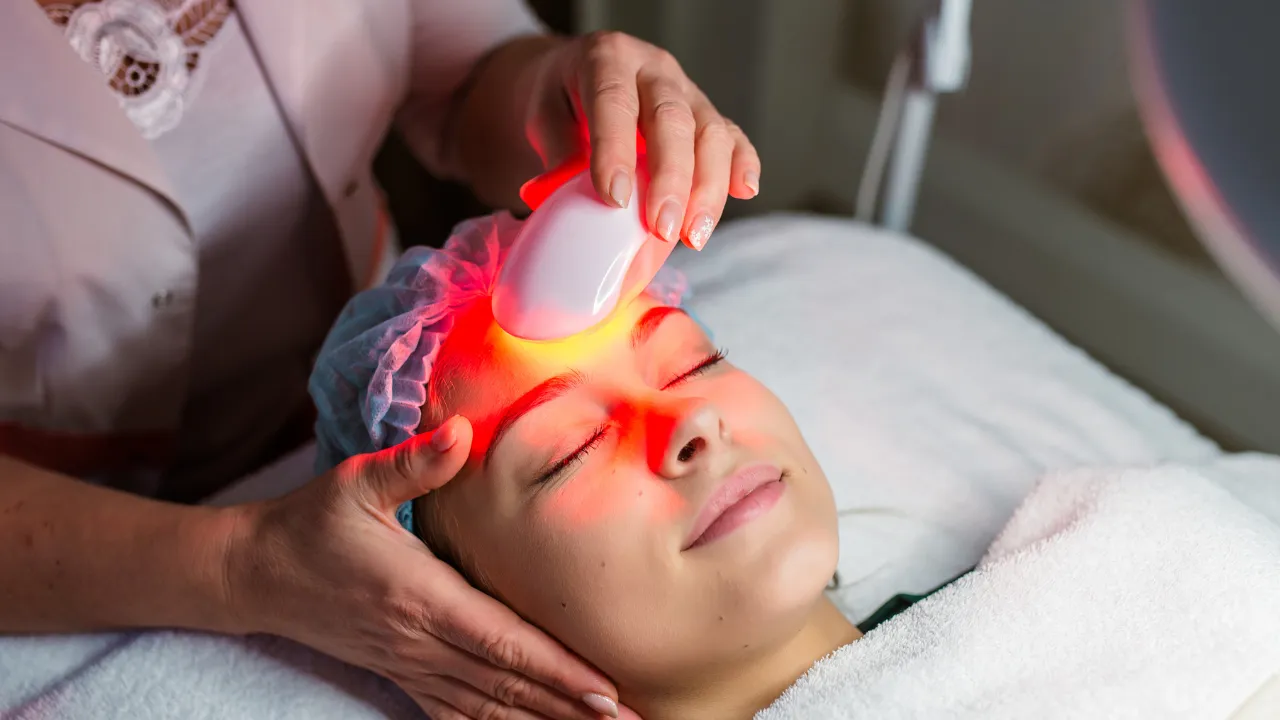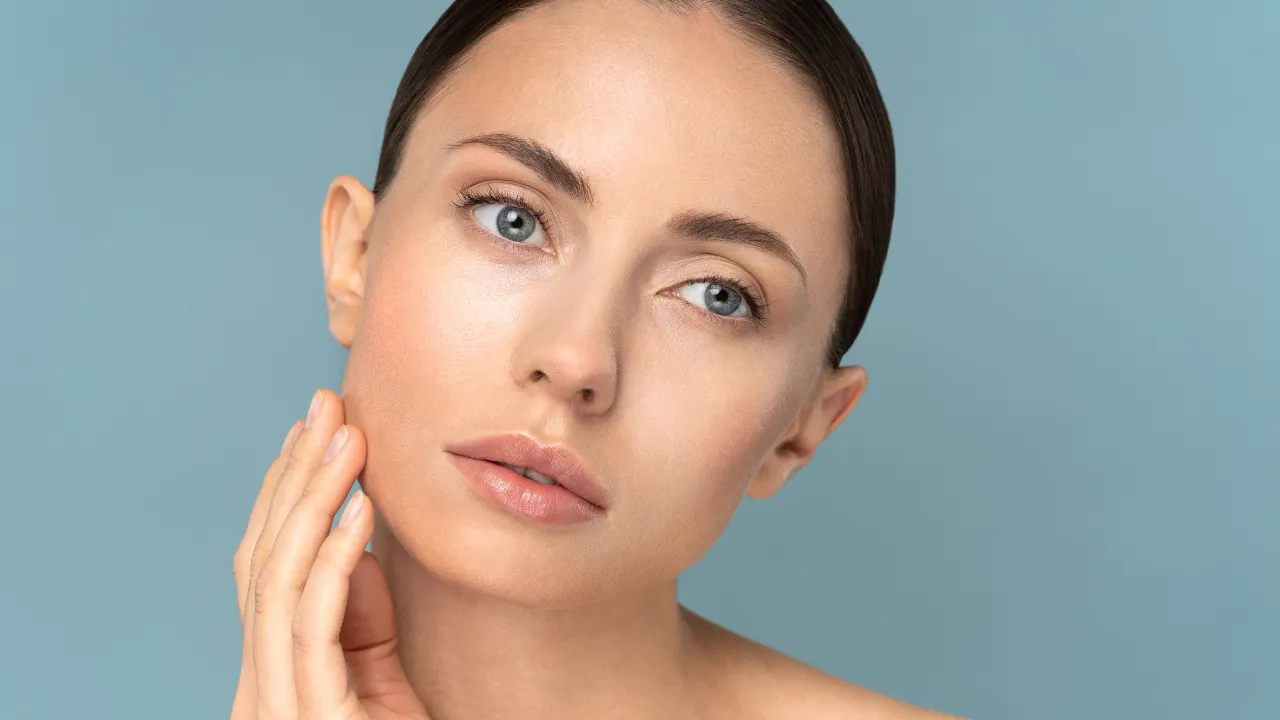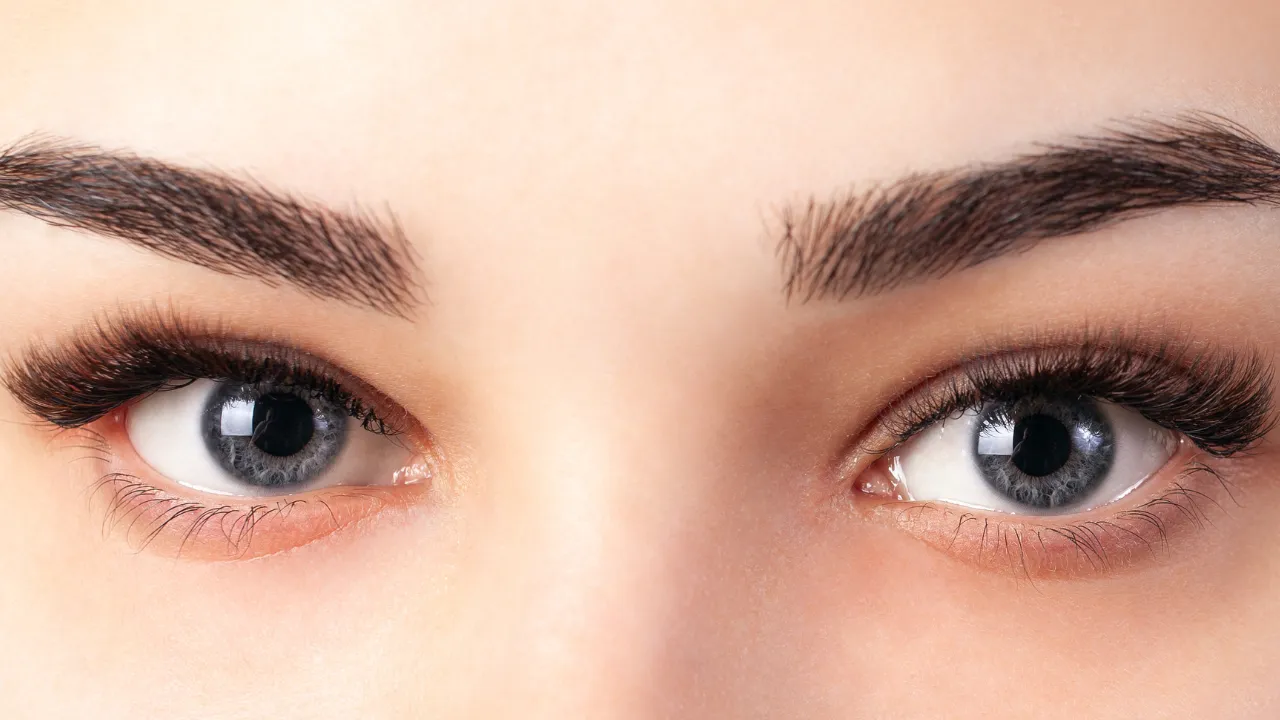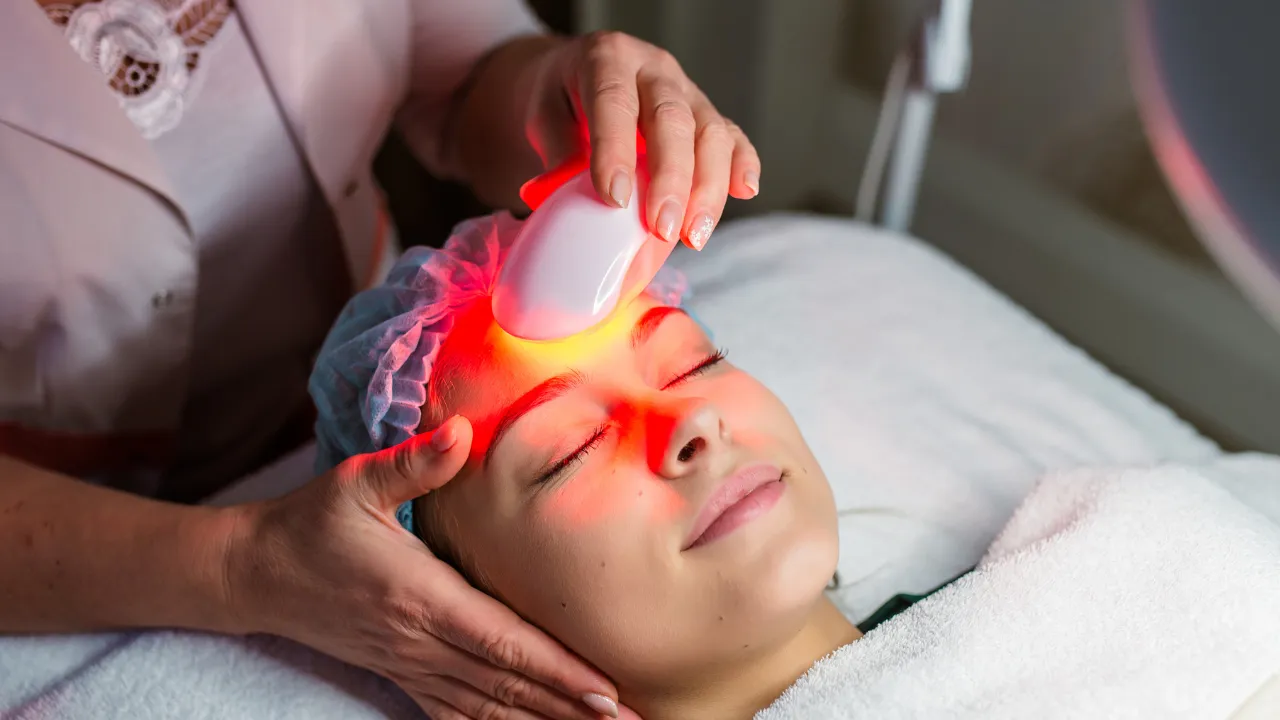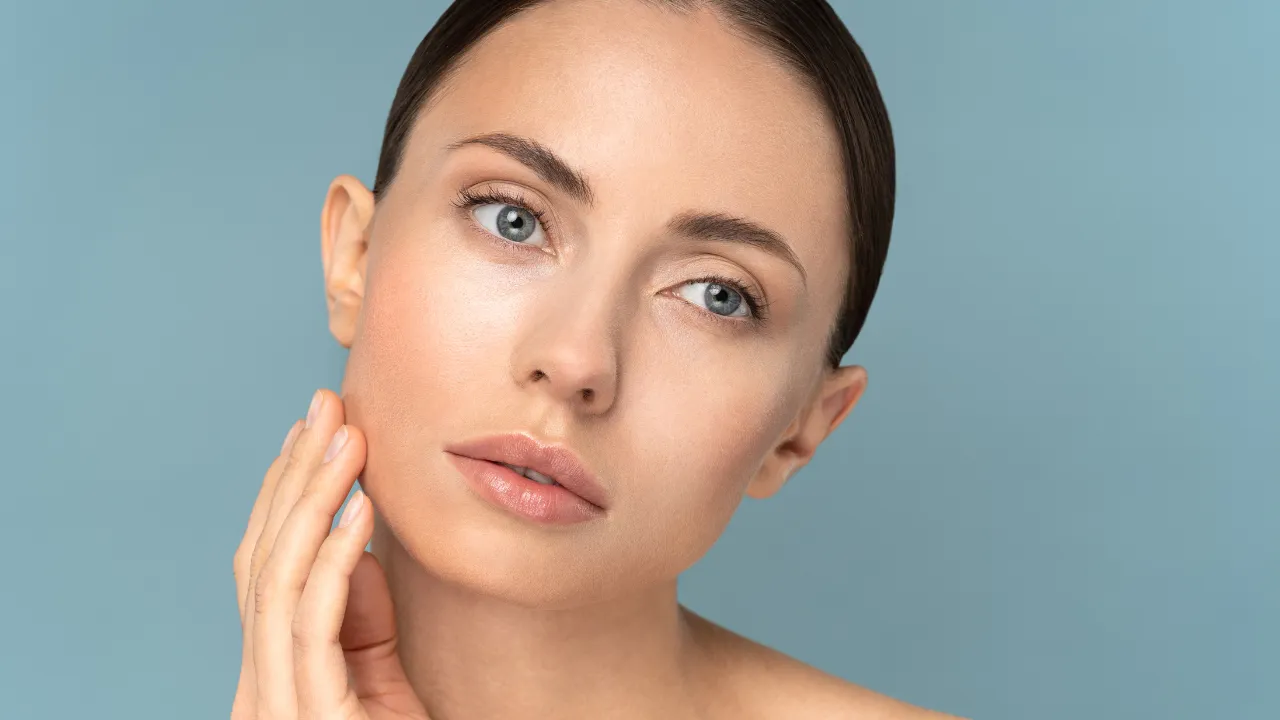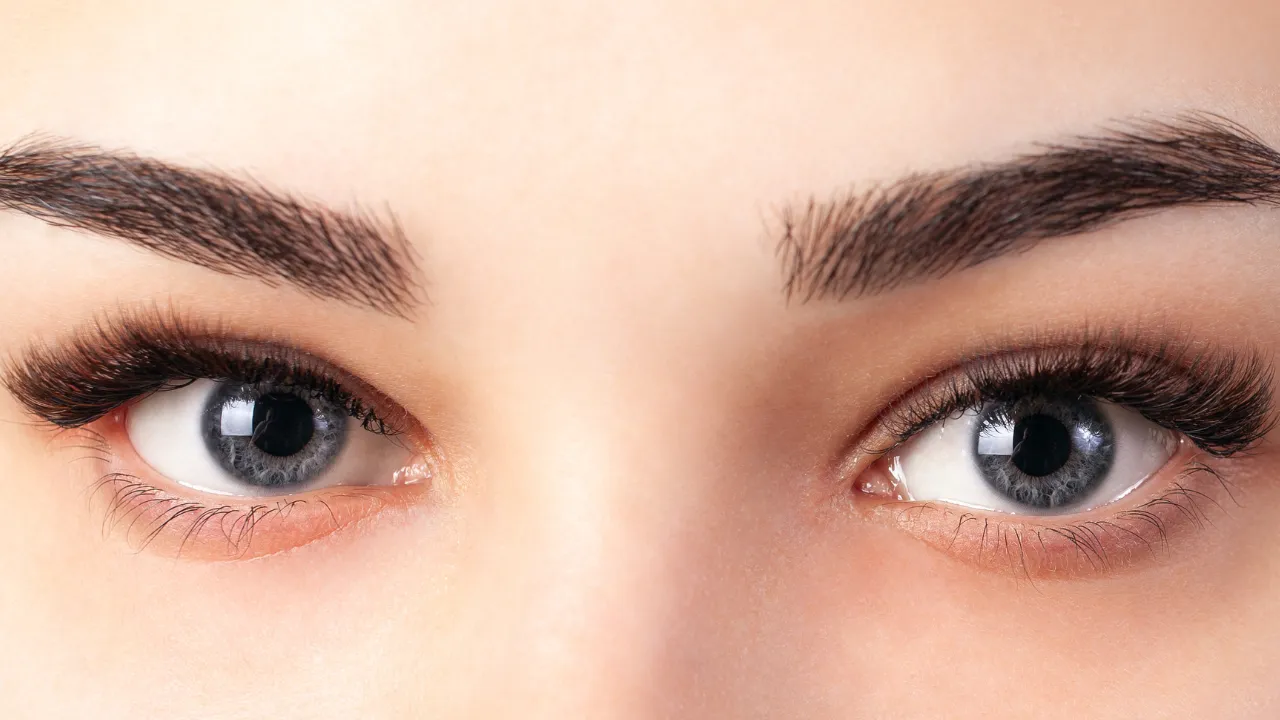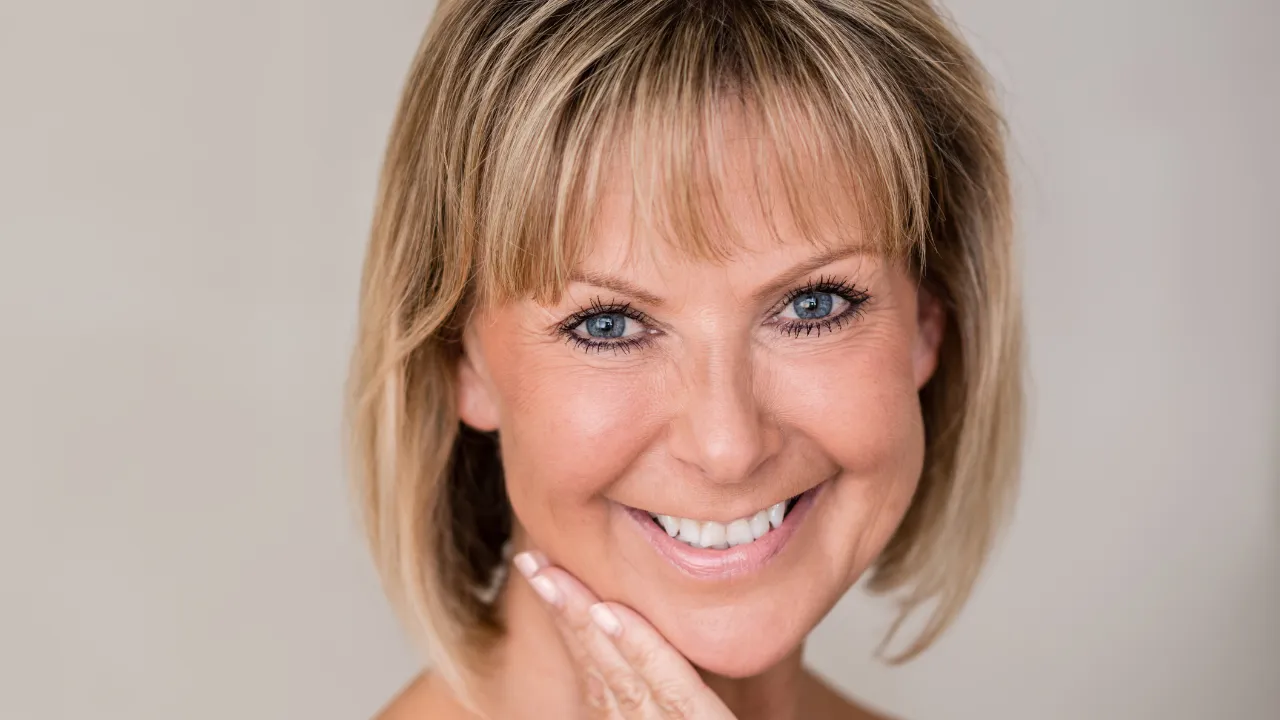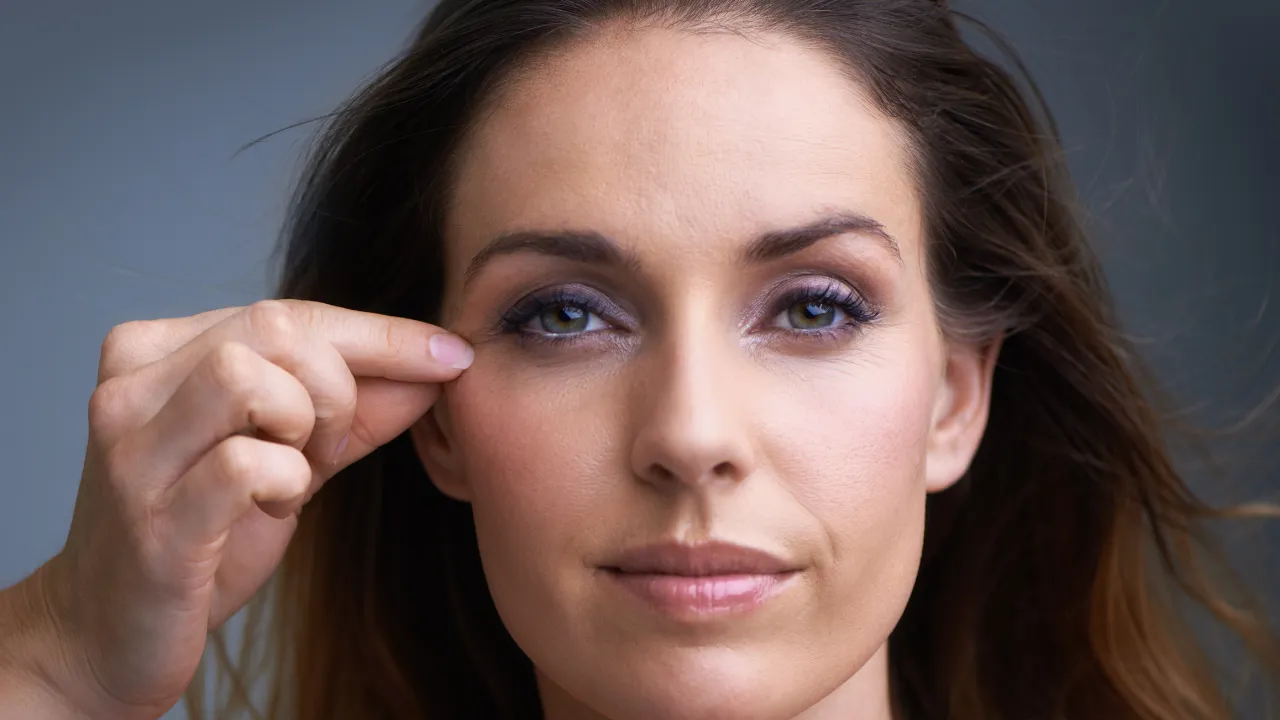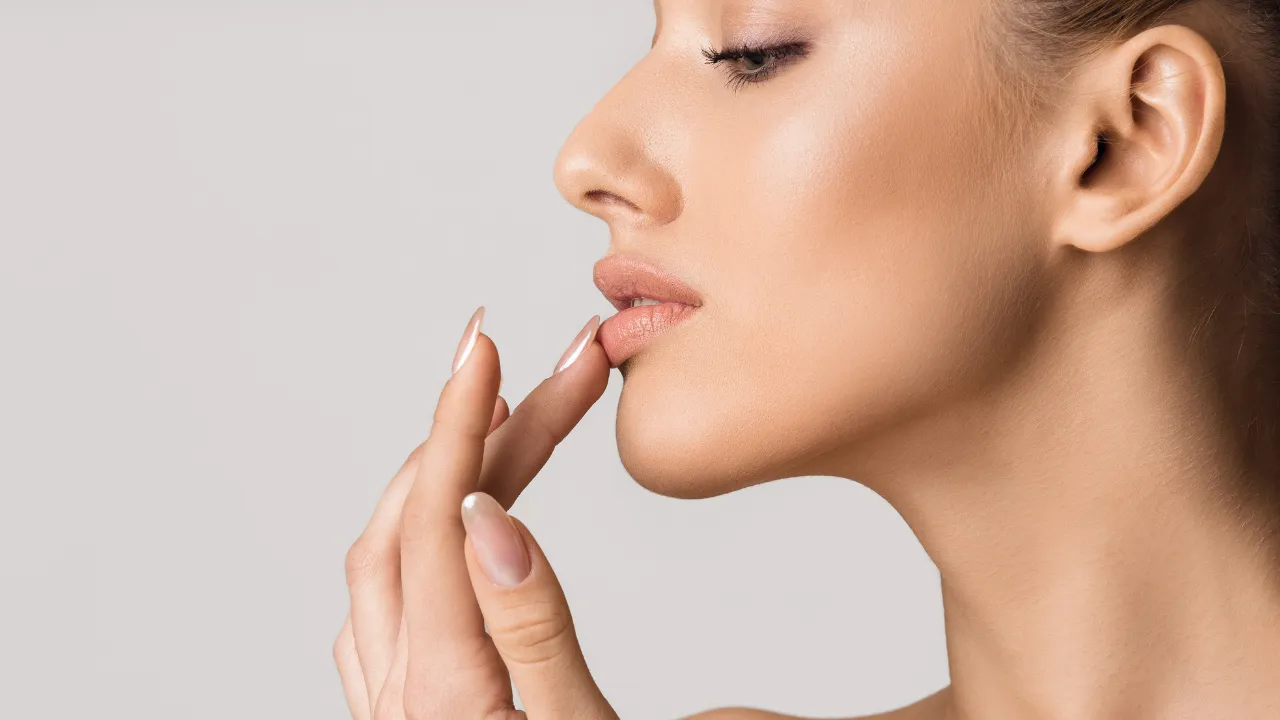Blepharoplasty patients often ask about the best concealer for blepharoplasty scars as they move through recovery.
At Kopelman Aesthetic Surgery in New York City, Dr. Joel Kopelman – a board-certified plastic surgeon with over 35 years of experience – emphasizes that the right concealer can improve confidence during the healing process while protecting sensitive skin.
Table of Contents
ToggleKey Takeaways
- The best concealer for blepharoplasty scars is water-based, full coverage, and safe for sensitive skin.
- Apply makeup only after the surgeon’s approval, usually two weeks postoperative, using a gentle touch and proper blending.
- Scar creams, silicone gels, and ointments support healing and help scars flatten over time.
- Silicone sheets, vitamin E oil, and scar-specific creams can reduce scar visibility alongside concealers.
- Laser therapy, microneedling, or revision surgery may be needed for persistent scars.
Best Concealer Options After Eyelid Surgery
Choosing the best concealer after eyelid surgery depends on coverage, texture, and compatibility. Products should hide redness and dark spots while being safe for sensitive skin types.
Best concealer for eyelid scars
Light, gentle formulas work best on thin eyelid skin. A water-based concealer with full coverage hides redness without heaviness. Thick or oil-based products may irritate healing tissue.
Options include Dermablend Quick-Fix Concealer and IT Cosmetics Bye Bye Under Eye Concealer. Both are safe for delicate eyelid skin and provide strong coverage.
Best concealer for scars on face (includes surgical scars)
Scars on the face often require more coverage. Full-coverage concealers for dark circles or spots also help with scars from plastic surgery. Hydrating ingredients support skin elasticity during healing.
Good choices include Estée Lauder Double Wear Stay-in-Place Concealer and Make Up For Ever Full Cover Concealer, both long-lasting with a natural finish.
Best concealer for blepharitis (cosmetic use only)
For redness or discoloration from blepharitis, use fragrance-free, hypoallergenic concealers. Avoid alcohol or harsh ingredients that irritate sensitive skin.
Clinique Beyond Perfecting Concealer and Neutrogena Hydro Boost Hydrating Concealer are light, hydrating, and safe for sensitive skin.
Disclaimer
These product suggestions are for general information only. Always check with your plastic surgeon before using new concealers or skincare products after eyelid surgery.
How to Hide Eyelid Surgery Scars With Makeup
Application matters as much as product choice. The aim is to cover scars without stressing the skin.
Color-correcting tips for bruising and redness
Green correctors reduce redness, while peach tones balance dark circles. Apply a small amount with a gentle touch for natural coverage.
Blending techniques for natural results
Use a damp sponge or soft brush. Apply in thin layers and set with translucent setting powder. Avoid pressing or pulling the skin.
Makeup hygiene after eyelid surgery
Replace mascara, eyeliner, and other products to avoid bacterial buildup. Fresh eye makeup is best after the post-operative healing period.
Use fragrance-free products and clean applicators regularly to reduce infection risk. These steps keep the post-operative area safe while allowing patients to apply makeup confidently.
Makeup hygiene and safe removal practices
Post-surgical skin is sensitive. Remove makeup with mild, water-based cleansers and avoid harsh scrubbing. Gentle touch supports proper healing.
Scar Care After Blepharoplasty
Scar care is as important as concealer. Patients should understand the changes that occur with scars and how to manage them effectively.
What to put on scars after eyelid surgery
Approved scar creams, silicone gels, or ointments support healing. Confirm recommendations with your plastic surgeon.
Healing timeline after eyelid surgery
In the first week, swelling and redness are common, which is part of normal blepharoplasty recovery. By week two, bruising fades, though incisions stay pink.
Scars soften over the next one to two months. By three to six months, redness lessens, and most fade significantly within 12 months.
When blepharoplasty scars flatten
Scars flatten over 6–12 months, though milestones like one month after eyelid surgery help patients measure progress. Patience is essential.
Lumpy scars after blepharoplasty: causes & fixes
Some scars feel thick or lumpy due to uneven healing. Options include massage, silicone therapy, or scar revision.
Non-makeup scar concealment methods
Silicone sheets flatten scars and reduce visibility under makeup. Emollients like vitamin E oil may help but require a patch test. Scar creams marketed for camouflage are another option.
Setting realistic expectations with scar photos
Before-and-after photos show how scars fade. Early redness and swelling are normal, improving as scars blend into eyelid creases.
These visuals reassure patients, showing that progress varies by healing and surgeon guidance.
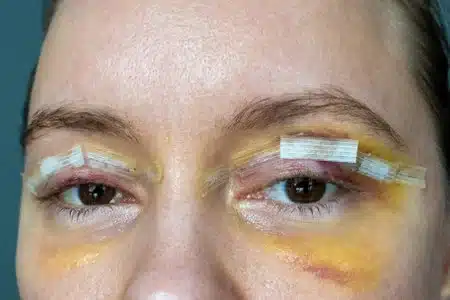
Blepharoplasty scars photos for expectations
Typical photos highlight progression: redness at first, then blending into natural creases over time.
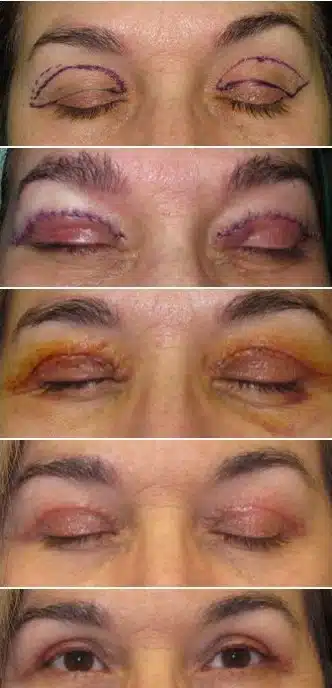
Medical Treatments for Persistent Scars
Some patients may require medical treatment if at-home care is insufficient.
Professional options: laser, microneedling, revision
Laser therapy stimulates collagen, microneedling smooths the texture, and scar revision may be necessary. These treatments should be done by a board-certified plastic surgeon.
Prescription-strength silicone gels and scar creams
Prescription options may work better than over-the-counter products, helping flatten scars and reduce redness.
Concealer vs. Scar Treatments: Which Works Better?
Both concealers and medical scar care help recovery. Patients often benefit from a balance of short-term coverage and long-term treatment.
When concealer is enough
For mild redness or dark spots, concealer is usually sufficient. Patients can apply makeup once cleared, often two weeks post-surgery.
When to consider medical treatments
If scars remain raised or discolored after several months, professional treatment such as laser resurfacing or revision may be beneficial.
FAQs on Blepharoplasty Scars and Concealers
Can surgical scars be hidden with makeup?
Yes. Concealer and color correctors can hide surgical scars. Always wait for surgeon approval.
How to get rid of scars after blepharoplasty?
Scars usually fade naturally. Silicone gels, laser treatments, or scar revision can help if scars persist.
Which concealer works best for sensitive skin?
Hypoallergenic, fragrance-free, water-based concealers are safest. They reduce irritation risk and suit most skin types.
Patient reassurance during recovery
It is normal to feel impatient while waiting for scars to fade. Healing takes time, but each step brings improvement.
Following expert advice on how to recover from a blepharoplasty supports better outcomes. Makeup and scar care can help patients feel more confident during this stage.
Redness, bruising, or mild texture changes are normal after surgery. With consistent care, scars usually fade and blend with the surrounding skin. Patients should remain patient and follow their surgeon’s advice.
Schedule a Consultation with Dr. Kopelman
If you are considering blepharoplasty or seeking guidance on scar management, Dr. Joel Kopelman offers trusted expertise.
As a board-certified plastic surgeon with more than 35 years of experience, he provides personalized treatment plans that prioritize safety and natural results. Schedule a consultation today to explore the best options for your recovery.

